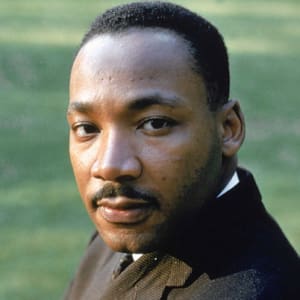There is this ideology that Martin Luther King Jr. represents the desire of peace between white and black people, and automatically, the lesson of Malcolm X comes after. This lesson teaches young people that X’s ideology was violent towards white people. These forms of thought are simple and are applied to complex individuals. Usually, these two characters come with their popular speeches, and only a few parts of those speeches are shown.
The information received by the general public is deceiving, especially when these two are introduced with their speeches. And how can it not be? “I have a dream…” sounds like a genuine person with a message of hope. “By any means necessary…” sounds like someone that is willing to do whatever it takes to get whatever he wants. This is how I was taught, with these themes behind the two people, but this is not how Martin Luther King Jr. and Malcolm X should have been taught to us.
Many people who know Martin Luther King Jr.’s history understand how vital he was during the Civil Rights movement. He is known as a person who peacefully protested the injustices that minorities faced. With his powerful “I have a dream speech,” he was able to convey his dream of being able to live in his country with the liberties and respect of a human being.
But, over the years, this speech has turned into his only message. When public media outlets use Martin Luther King Jr., they only bring up his premise of freedom, but never mentioned the many injustices he has tackled bringing liberty for all. His premise of freedom cannot ignore his other main ideas of anti-capitalism, poverty, materialism, and anti-militarism.
Many pieces of his, such as, “Beyond Vietnam: A Time to Break Silence,” eloquently show how the United States crippled opportunities for the poor with its materialistic and shady desires. King addresses the “cruel irony of watching Negro and white boys on TV screens as they kill and die together for a nation that has been unable to seat them together in the same schools.”
His anti-militarist and non-violent approach to situations also made him question the people responsible for these large doses of violence. Martin Luther King Jr. eloquently explains how he could “never again raise my voice against the violence of the oppressed in the ghettos without… [speaking] clearly to the greatest purveyor of violence in the world today—my own government.” This one piece talks about many global problems that minorities face on both sides of a spectrum. They are vital to his premise of freedom for all, but were heavily ignored by the United States because it emphasizes values of socialism and “radical” change.
If you have only read Martin Luther King’s “I Have a Dream” speech, we ask you to please read his other works. Please read, “Beyond Vietnam: A Time to Break Silence,” “Letter from Birmingham Jail,” “The Greatest Source of Violence in the World” and “The War in Vietnam—Inflicting Suffering and Hatred.” Please bring to light his other revolutionary speeches that highlight the disparities of minorities and marginalized all over the world, and inform people to learn the true values of Martin Luther King.



